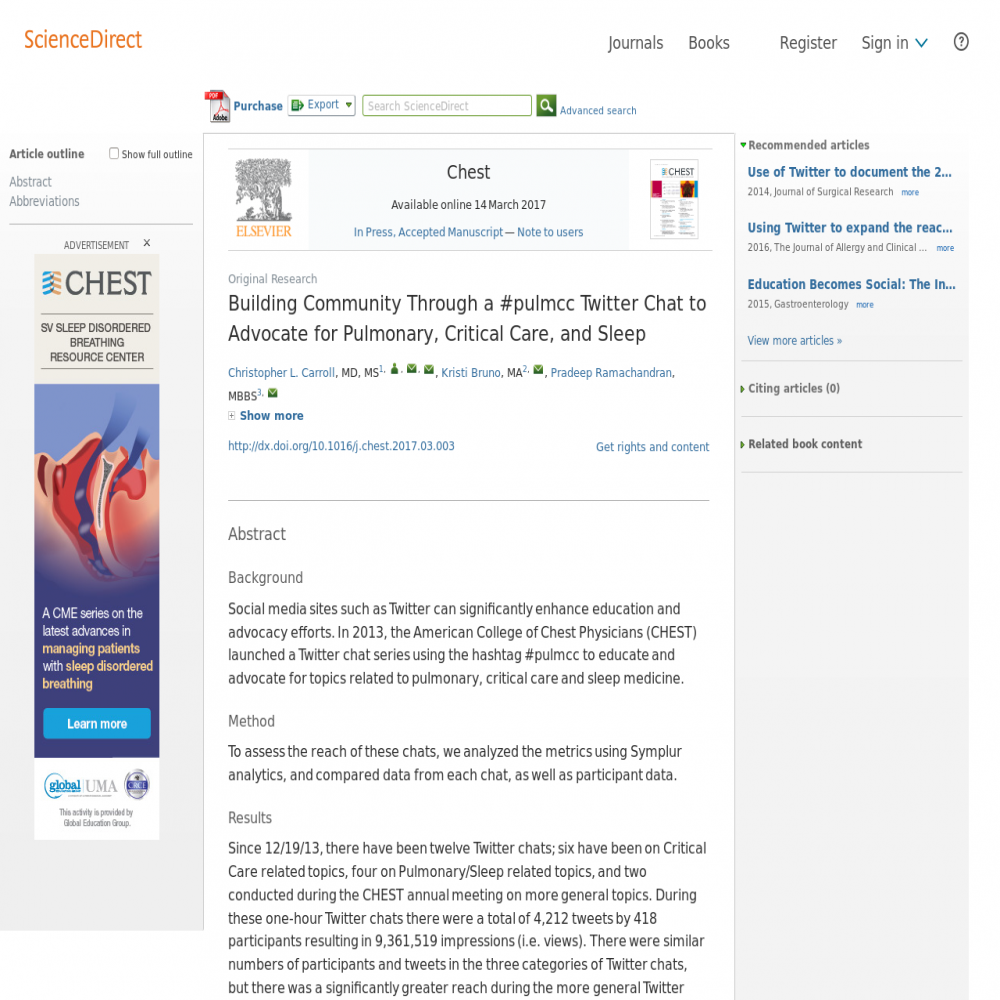Building Community Through a #pulmcc Twitter Chat to Advocate for Pulmonary, Critical Care, and Sleep
A healthcare social media research article published in CHEST, March 14, 2017
- Title
- Building Community Through a #pulmcc Twitter Chat to Advocate for Pulmonary, Critical Care, and Sleep
- Authors (alpha)
- Christopher L Carroll, Kristi Bruno, Pradeep Ramachandran
- Published
- March 14, 2017
- Journal
- CHEST
- DOI
- 10.1016/j.chest.2017.03.003
- Pubmed
- 28302497
- Altmetric
Abstract
Social media sites such as Twitter can significantly enhance education and advocacy efforts. In 2013, the American College of Chest Physicians (CHEST) launched a Twitter chat series using the hashtag #pulmcc to educate and advocate for topics related to pulmonary, critical care and sleep medicine. To assess the reach of these chats, we analyzed the metrics using Symplur analytics, and compared data from each chat, as well as participant data. Since 12/19/13, there have been twelve Twitter chats; six have been on Critical Care related topics, four on Pulmonary/Sleep related topics, and two conducted during the CHEST annual meeting on more general topics. During these one-hour Twitter chats there were a total of 4,212 tweets by 418 participants resulting in 9,361,519 impressions (i.e. views). There were similar numbers of participants and tweets in the three categories of Twitter chats, but there was a significantly greater reach during the more general Twitter chats conducted at the CHEST annual meeting with 1,596,013 + 126,472 impressions per chat session at these chats, compared to 739,203 + 73,109 impressions per chat session during the Critical Care Twitter chats and 621,965+ 123,933 impressions per chat session in the Pulmonary/Sleep chats. Seventy-five of the participants participated in 2 or more #pulmcc Twitter chats and the average percent of return participants in each chat was 30% + 7%. The large majority of the return participants were healthcare providers. Twitter chats can be a powerful tool for the widespread engagement of a medical audience.
Altmetric
The Altmetric Attention Score is based on the attention a research article gets on the internet. Each coloured thread in the circle represents a different type of online attention and the number in the centre is the Altmetric Attention Score. The score is calculated based on two main sources of online attention: social media and mainstream news media.
Healthcare Social Media Research
See the full list of healthcare social media research articles with data from or reference to Symplur.
#hcsmR is a collaboration between Stanford Medicine X and Symplur.


